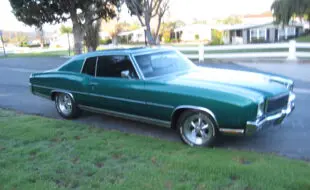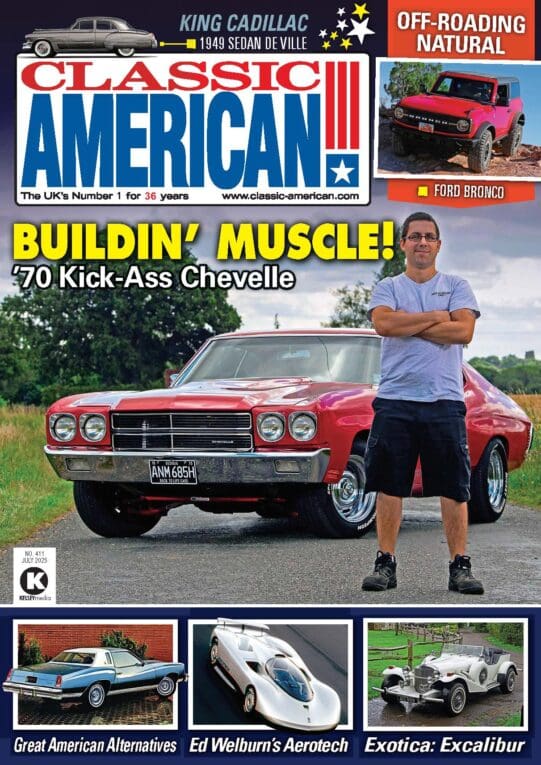If you’re a fan of NASCAR racing, there can be no greater tribute than a remarkable recreation of one of the ‘winningest’ cars of Ford’s Total Performance era: ‘Fast Freddie’ Lorenzen’s 1965 Ford Custom. Meet one man who did just that…
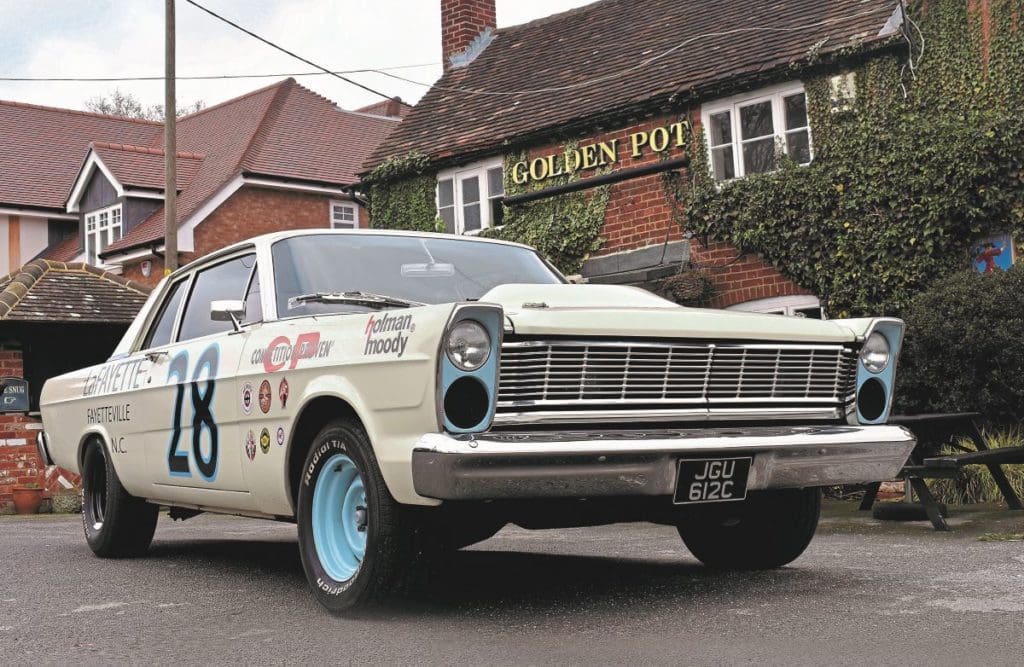
Words and photography: Zack Stiling Archive images: Ford Motor Company
More than anything else, drag racing and NASCAR are the two types of racing which embody all-American motorsport in the eyes of the rest of the world. Sadly, few people will ever have the opportunity to see historic NASCAR outside of the US, but that doesn’t mean the series’ aesthetic can’t be enjoyed over here. Dave and Jill Marriner’s 1965 Ford Custom was built in the States by an owner wanting the best of both worlds, hence he created a capable Super Stock racer finished in the livery of the NASCAR Galaxie in which Fred ‘Fast Freddie’ Lorenzen won the 1965 Daytona 500. The car was imported into Britain in March 2017 by a dealer and Dave bought it a few months later: “I was sold on the car by its overall condition. The body and underside were really good, the whole thing was straight and, once I drove it, I knew I was going to buy it. I insured it and drove it home.”
Enjoy more Classic American reading in the monthly magazine.
Click here to subscribe & save.
Dave had always fancied an American car and especially wanted something reminiscent of the days he spent at Santa Pod in his youth, but a multitude of other interests got in the way. “I had motorbikes for a time, but they stopped being practical when I got married and had a family, so I needed to find a new hobby that we could all enjoy.” As a lifelong steam enthusiast, this transpired to be the ownership of a traction engine, with a late Victorian living van, with which the Marriner clan would visit steam fairs. Eventually, problems with storage meant that all the steam transport had to be moved on, leaving Dave free to fulfil his American automotive desires. The Custom wasn’t actually his first American car, as he’d bought a 1917 Stutz Series R Roadster in 2013, but that didn’t have quite the quarter-mile pedigree he was after.
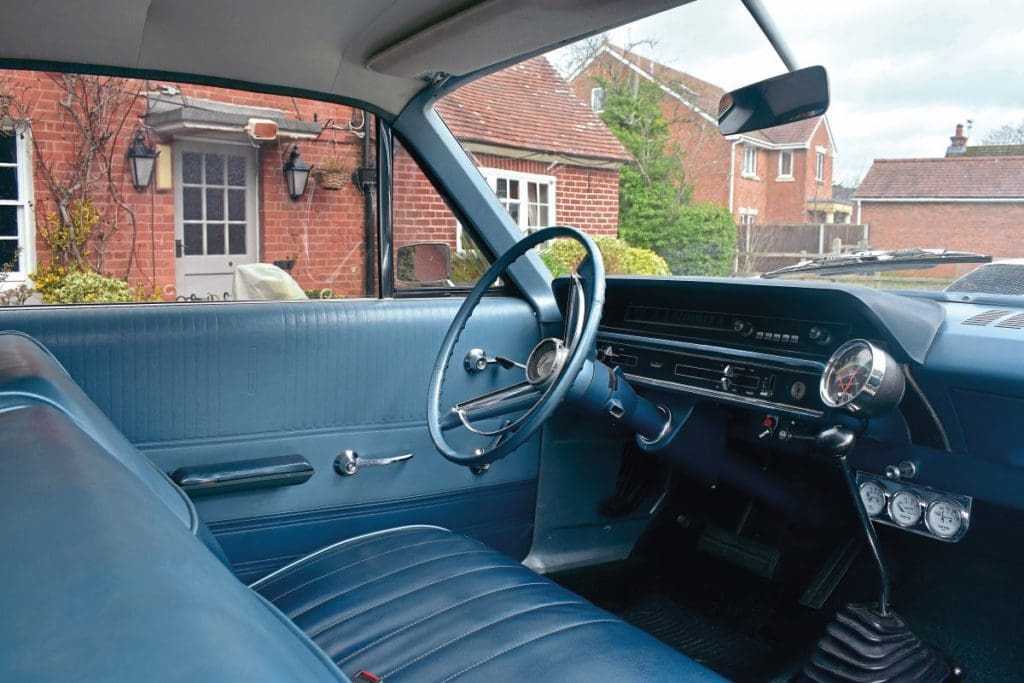
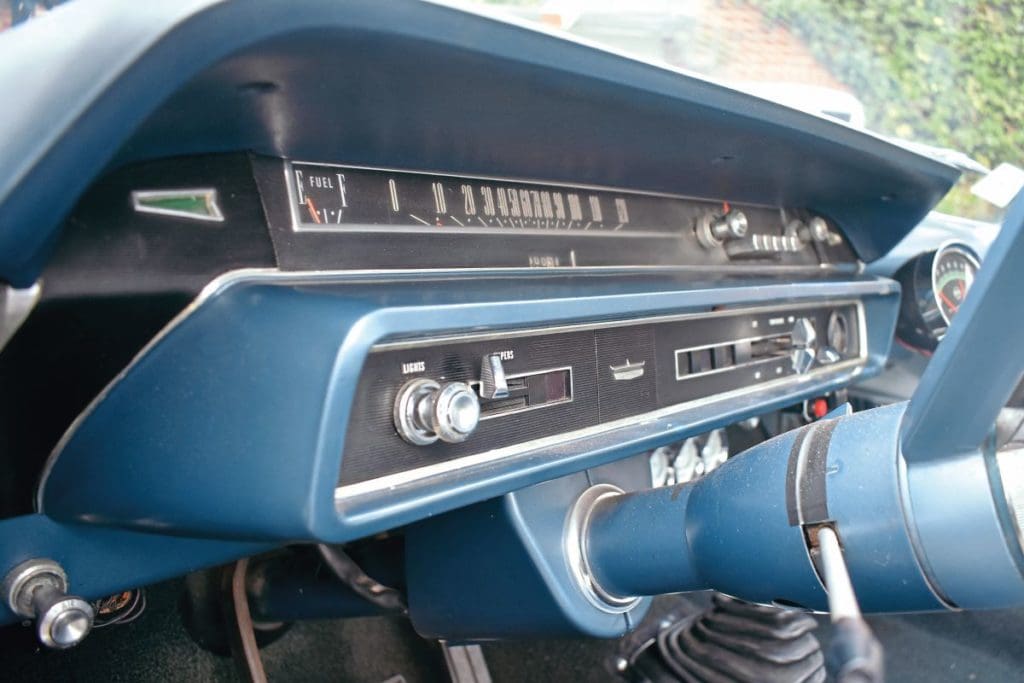
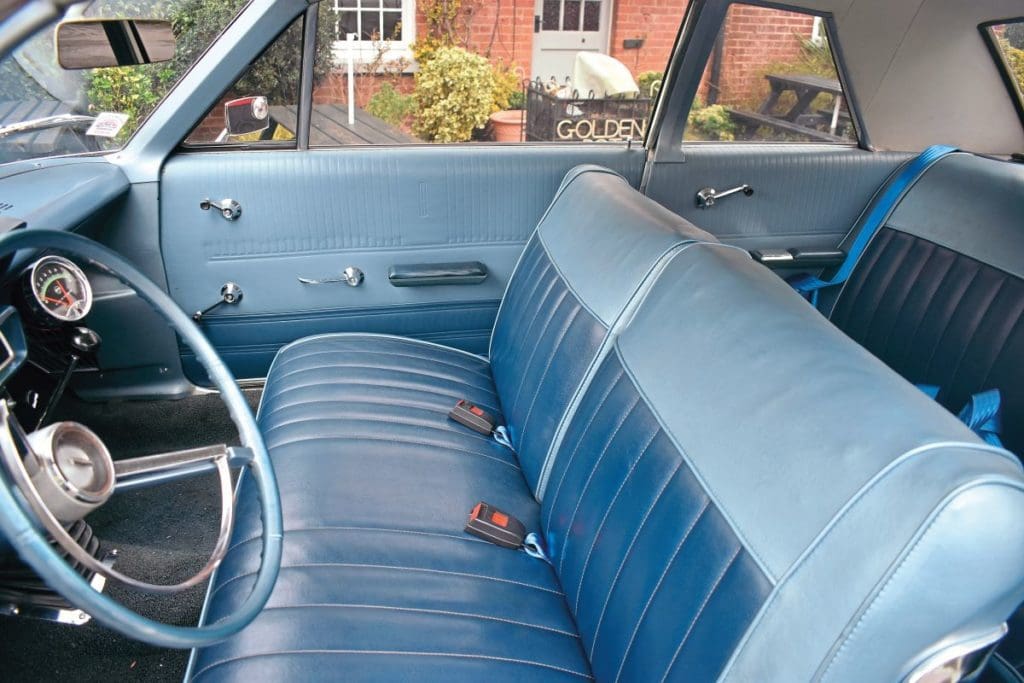
The Custom’s former owner in Sykesville, Maryland, had bought it in 2007 and set about rebuilding it into its current Super Stock specification. The car had left the production line in Louisville, Kentucky, in Wimbledon White with a blue interior, fitted with the Ford-O-Matic transmission and 9in back axle. He only racked up 5000 miles in his 10 years of ownership, though some of that involved hell-for-leather runs down some of Maryland’s dragstrips.
The most exciting aspect of Dave’s Custom, backing up its competition appearance, is the 410cu in race engine built by Steve Thompson and Scott Anderson, a successful drag racing team based just north of Washington, DC. The 410 began life as a 390, bored out to 4.110in and fitted with a 428 crankshaft and iron rods of 3.784in stroke, all topped with standard C8AE-H heads. A new Holley four-barrel carb on an Edelbrock intake feeds the cylinders, while ceramic-coated headers lead to a pair of three-inch exhaust pipes and the lower headlights have been removed to accommodate two thirsty air intakes.
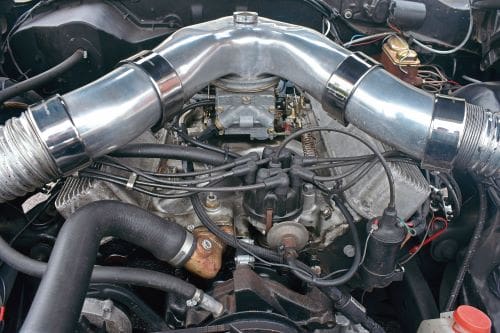
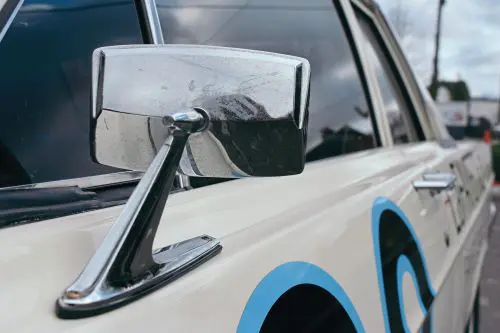
The transmission was given to Dave Wilson of Southern Automatic Transmissions in Sykesville to be rebuilt with new parts and an uprated shift kit, and the gearshift moved from the column to the floor. The finished car appeared in the three-part film NASCAR: The Rise of American Speed, released during the week of the 2016 Daytona 500, although only as a background vehicle, perhaps on account of its inappropriate Thunderbolt hood. The full-size Fords played a significant part in NASCAR that year, as they won 48 out of the 55 events, giving Ford its best year ever in the sport.
The Custom often gets mistaken for its full-fat sister model the Galaxie, but it’s a much rarer car. Only 236,757 Customs were built for 1965, of which 49,034 were base two-door sedans, compared with 564,098 Galaxies, although the Custom was only offered as a two- or four-door sedan and in base or better-trimmed Custom 500 trim levels. Starting prices went from $2361 to $2518. The Custom was essentially a Galaxie stripped of all luxuries, with rubber floor mats, no clock, no air conditioning, no power steering, power brakes, power windows or power anything and very little in the way of chrome trim.
The name itself was introduced in 1964 (though it had been used previously) to take over from the Galaxie 300. They were primarily intended to cater for the public service sector, selling to police forces, fire departments and taxi operators, so most were used and abused before being scrapped. However, Ford wasn’t oblivious to the sort of private buyer who would value a light, no-frills car over a Galaxie with all the trimmings – the racer. Accordingly, Ford did offer the Custom with 352, 390 and 427 V8s instead of the standard-fitment 240 straight-six, ideal for the strip with its famously rigid two-door ‘post’ body. Dave had the car weighed before its first MoT and found it to be nearly a full 1000lb lighter than a ’65 Galaxie.
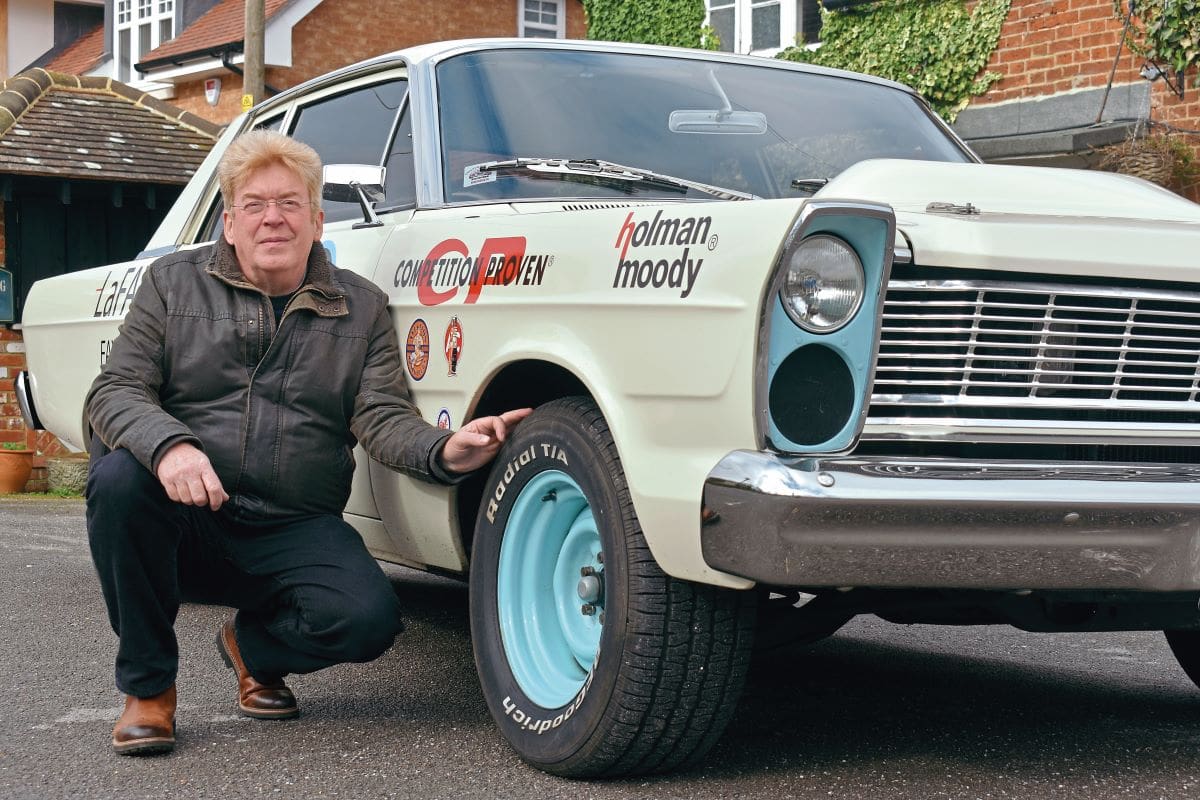
When Dave went to collect the car, the chassis was very dry and the underbody was covered in very old underseal. He applied body wax thoroughly across the whole structure to keep any future rot at bay and then put it through an MoT, just to confirm that it was all as good as he thought. Then he got on with ironing out a few creases, chief among which was bolting the front wings on a bit more tightly, since they shook all over the place when he was driving. This was followed by the installation of a horn, wiper blades and washer jets and new front suspension bushes, then Dave sorted out the tracking, camber and castor set-ups. Jill was somewhat unnerved by the fact that she could see the road through the gaps in the doors, so Dave decided to fit door seals, and they both felt physically sick from the resonance and fumes produced by the short exhausts with Thrush boxes that exited just before the rear axle, so he built a whole, full-length exhaust to the back of the car.
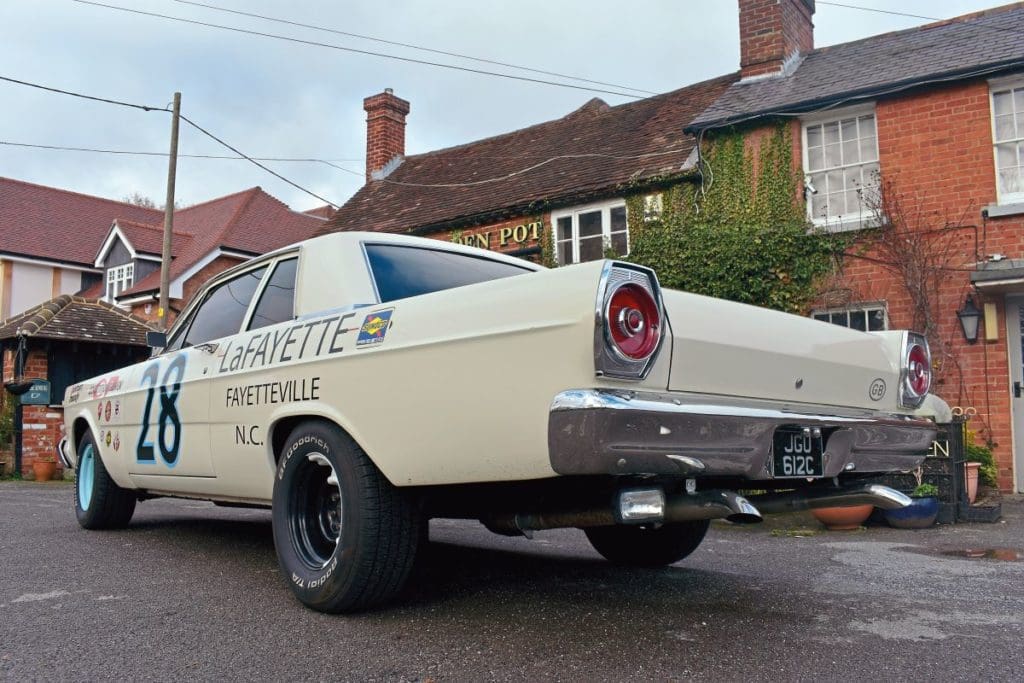
Originally, the Custom was fitted with all-round drum brakes and a single master cylinder. Dave decided to upgrade to front discs and a dual master cylinder with proportioning valve, using a kit from Stainless Steel Brakes in the US which was fitted by a local specialist. Although braking improved, it still wasn’t good enough for Dave to feel confident using the car in modern traffic, but a set of EBC Yellow Stuff pads resolved that: “I think this highlights a failing in the kits available from the US. The kits are built to a price and not necessarily fantastic quality. Certainly, the pads that came with mine were very low quality, but the EBC pads transformed the performance. I purposely didn’t fit a brake booster, as race cars of the period wouldn’t have had one.” Dave then fitted some coilover shocks to the rear of the car, which he’d had made by Gaz Shocks. These, he says, vastly improved the handling. “I now have about 20 damper settings and infinite spring load adjustments.”
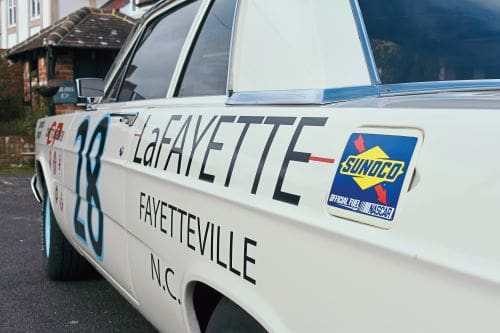
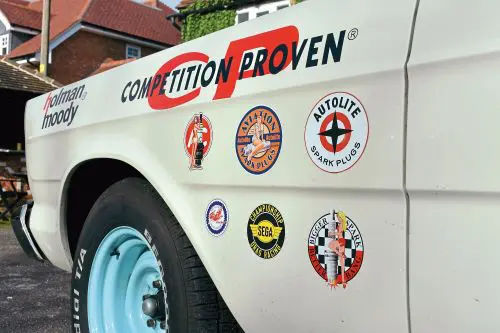
Originally, Customs had 14in wheels, but Dave swapped these for a set of 8 x 15in jobs from North Hants Tyres, wrapped in BF Goodrich 255/60/R15s at the front and 255/70/R15s at the rear. “The rear tyres were quite a close fit and I had to cut the Panhard rod and make it adjustable to share out the available clearance. I can just squeeze a fingertip in either side now, but they don’t touch.” The front wheels were painted to match the blue of Fast Freddie’s race car, while the rears are black and white. “Apparently this was a trick to check slip and speed when the cars were on the banking. You can calculate them if you know the shutter speed of your camera.” Finally, Dave fitted hood springs so he didn’t have to keep it propped up with a stick.
After just a few months, Dave suffered a catastrophe when the spider gears in the diff self-destructed. Pulling the diff apart on his driveway, he found that the oil had solidified into a single lump. “There wasn’t a drop to run out of the diff case. The lack of a drain plug is, in my opinion, a serious failing with the Ford 9in diff.” Geof Hauser at Hauser Racing rebuilt the axle with a new set of gears and bearings and he also fitted a limited-slip diff. Where the 9in originally had 3.00 gears, Dave chose to uprate them to 3.50. “This was a compromise – I was being encouraged by some to go to 4.10.”
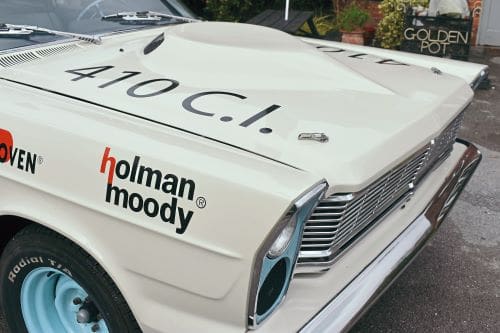
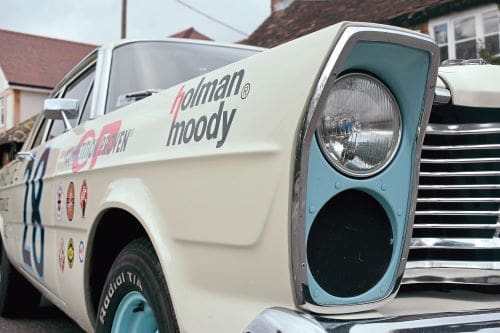
Since half his headlights had been converted to air intakes, Dave fitted Jaguar high-power units to improve the beams from the remaining two, and has tuned the engine and transmission, including fitting a Holley manual choke kit to the point where he is happy with it, though he has plans to replace the Ford-O-Matic with a manual four-speed.
Dave put the Custom through its paces at the Kop Hill Climb in 2019 and now feels like he has got to know it well, so he plans to be more adventurous and travel further afield with it in the future. Presumably, though, he has enough cubic inches under his right foot to keep him satisfied for the foreseeable future? “Well, I’ve been thinking about building an aero-engined special..!”
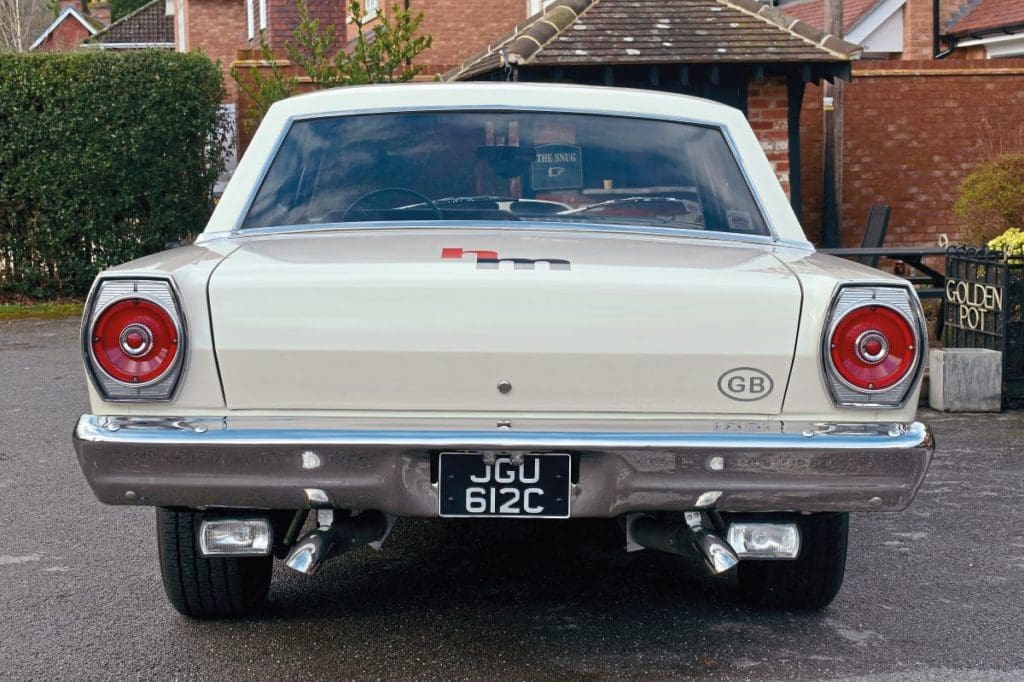
‘Fast Freddie’ facts
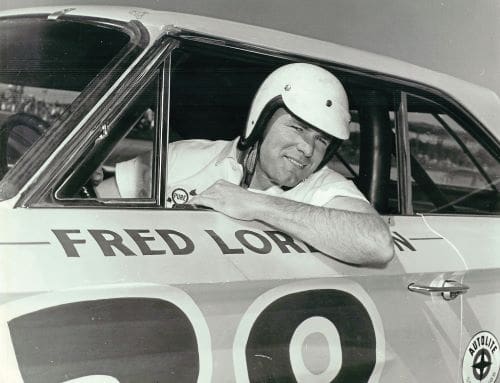
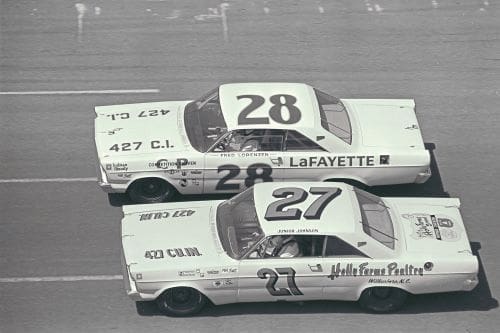
Fred Lorenzen was born in Elmhurst, Illinois, on December 30, 1934, and began his racing career at the age of 13, building a car from scrap parts. After winning a high-school demolition derby, he entered NASCAR in 1956 and rose through the motorsport ranks to become the first NASCAR driver to win more than $100,000 in one season, amassing $113,570 in 1963 when driving for the Holman Moody team. More impressively, he achieved this having competed in only 29 of the 61 races scheduled for the season.
Lorenzen was to be found behind the wheel of Holman Moody Fords in the famous blue-and-white #28 livery from 1961, until he unexpectedly announced his retirement from NASCAR after 158 races in 1967. The story attached to the sponsorship from LaFayette, a local Ford dealer, goes that Lorenzen was driving through Fayetteville, North Carolina, when his tow vehicle broke down near the dealership. LaFayette fixed the vehicle and then agreed to sponsor him for one race, but because of his immediate success they ended up remaining his primary sponsor until the end of his career. He returned to the fray from 1970 to 1972 before retiring permanently.
His most successful years were from 1962 to 1967, and in 1965 he won the Daytona 500, Virginia 500, World 600 and National 400 in a Galaxie wearing the colours of Dave’s Custom. Racing at Daytona on February 14, Lorenzen started in fourth. Fellow Galaxie driver Junior Johnson was the early race leader, but he retired when a blown tyre caused him to crash. For much of the remaining race, Lorenzen traded places with Marvin Panch, but it started to rain on Lap 129 and, when the two cars touched, Panch went into the spin. Lorenzen’s damaged wing was rubbing against his tyre but, when the rain became a torrent, the race was ended on Lap 133 with Lorenzen still in the lead.


